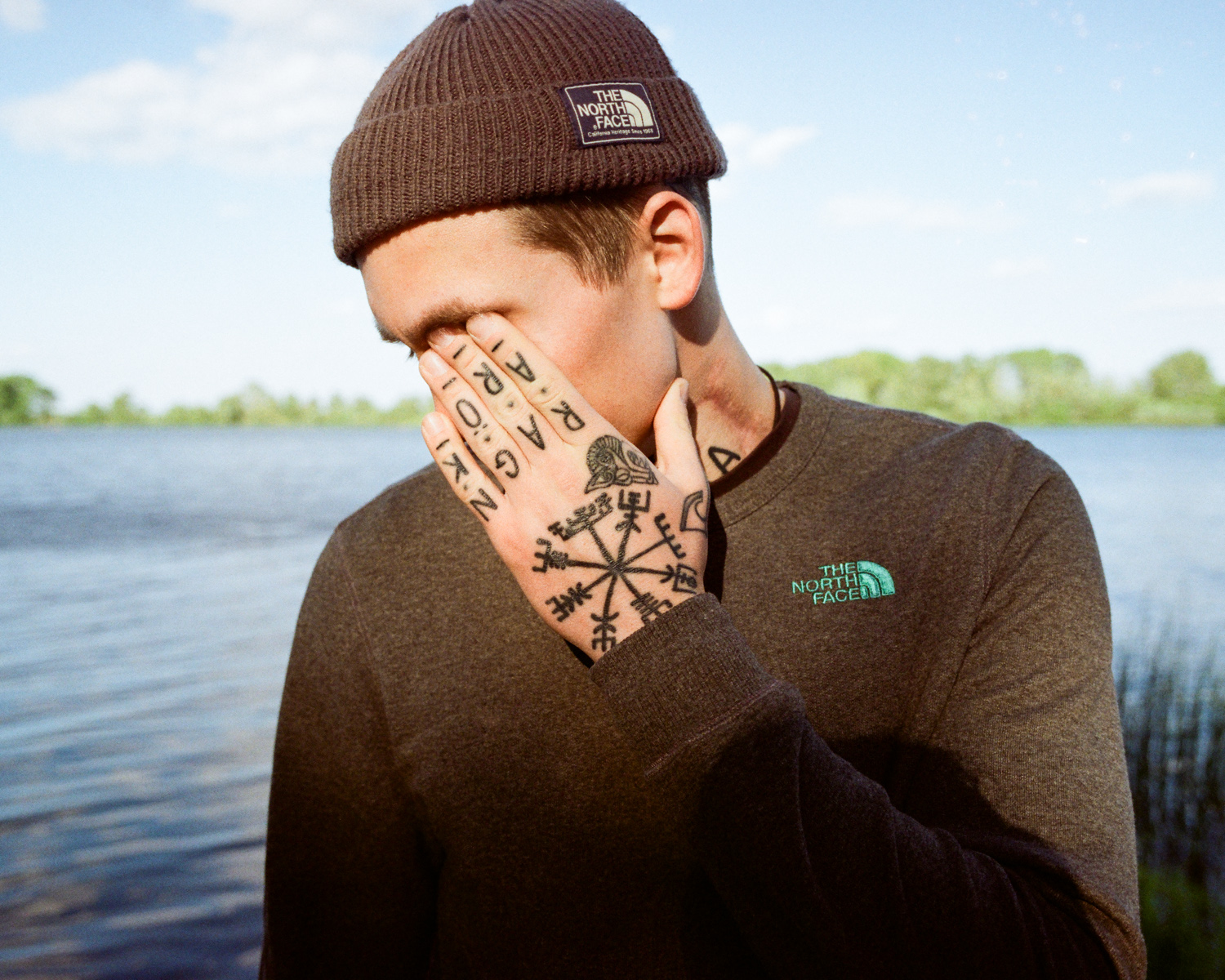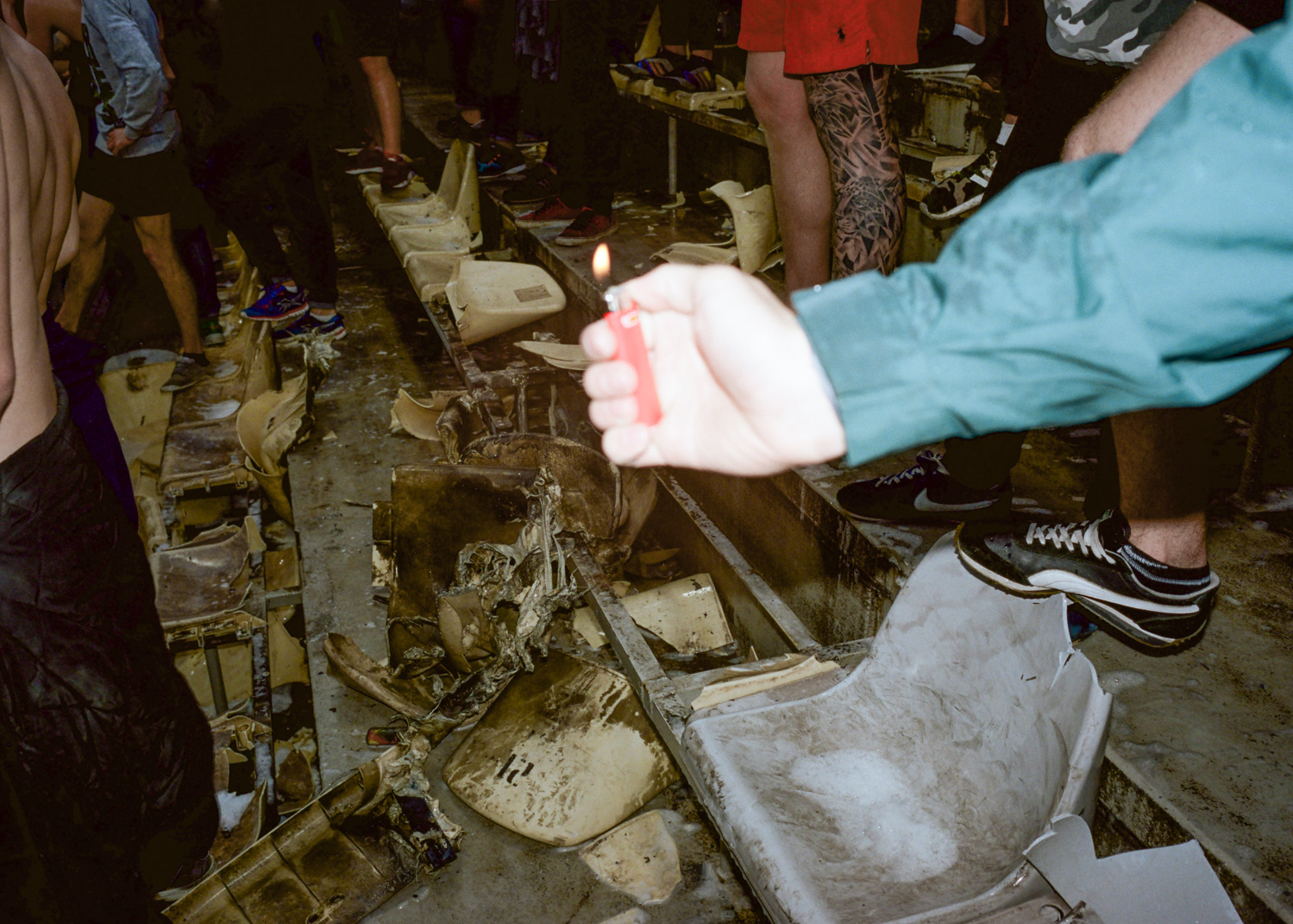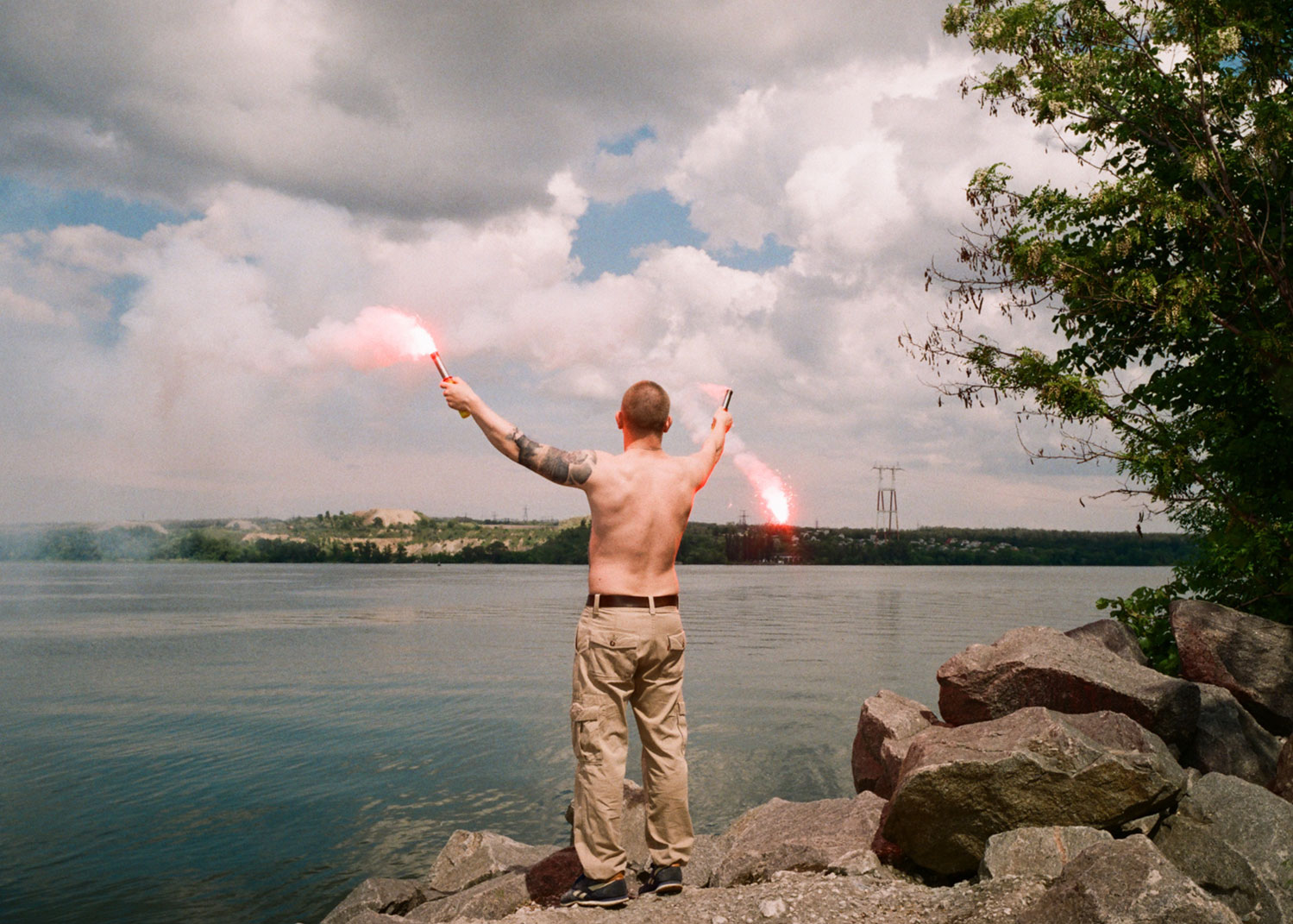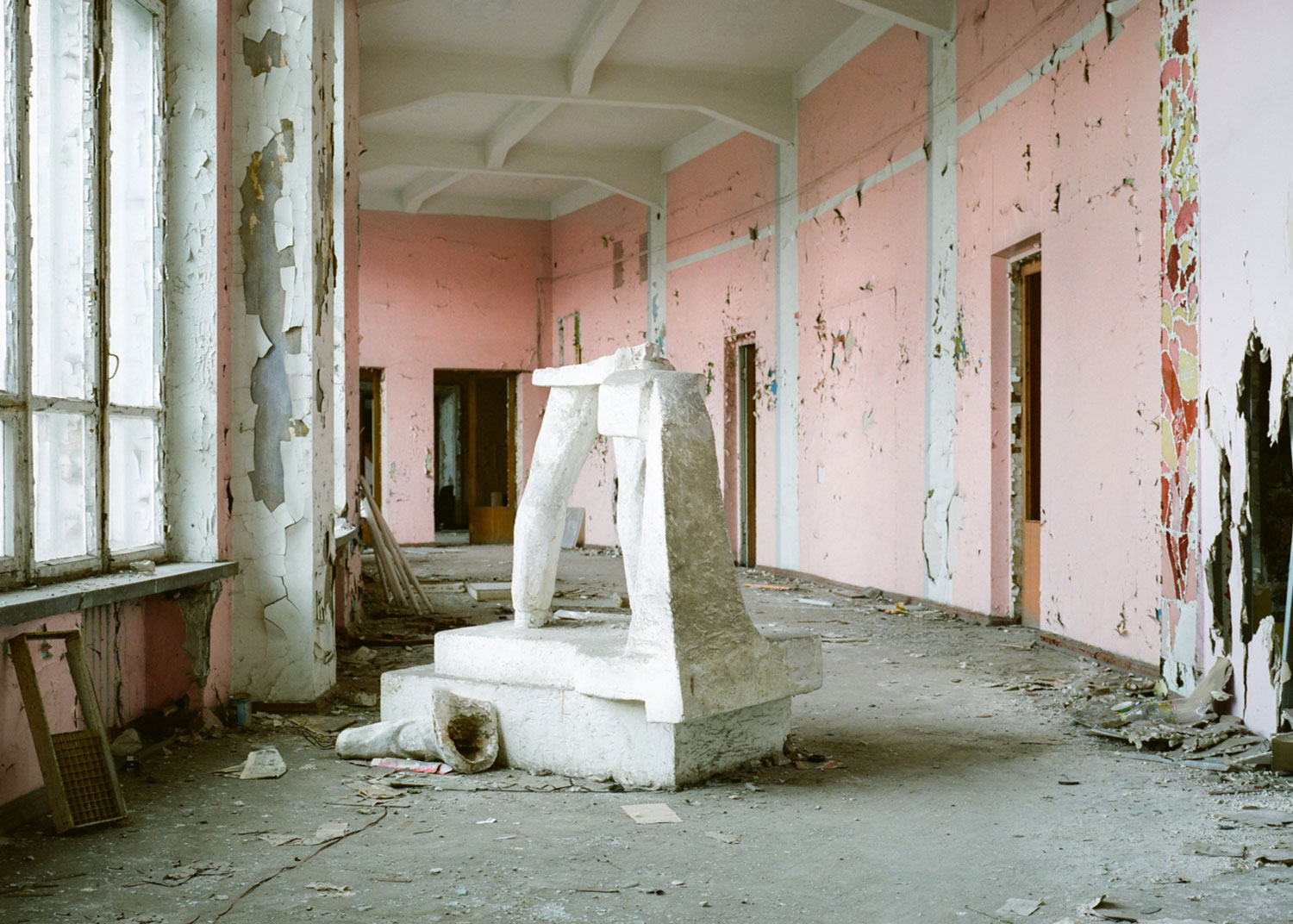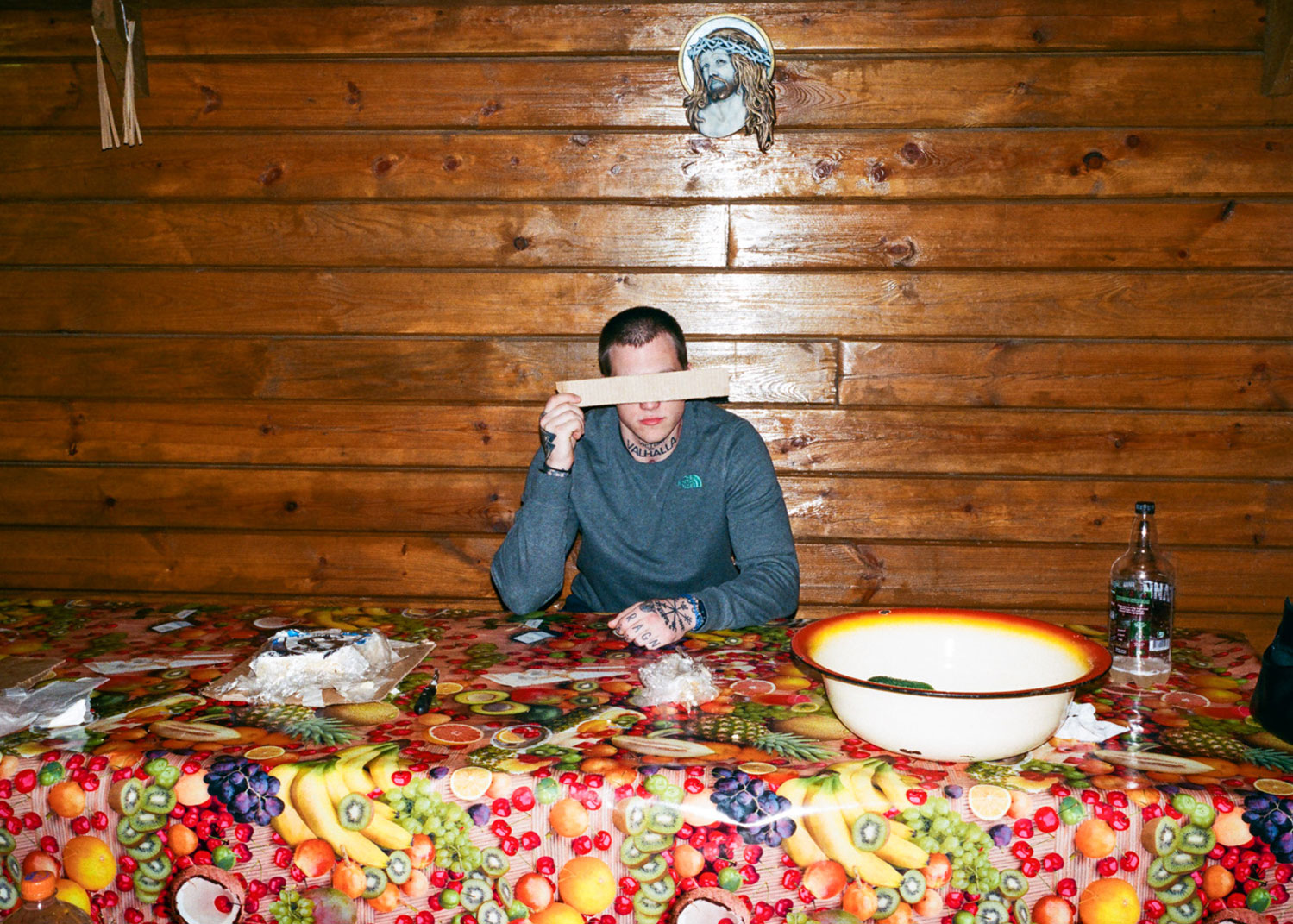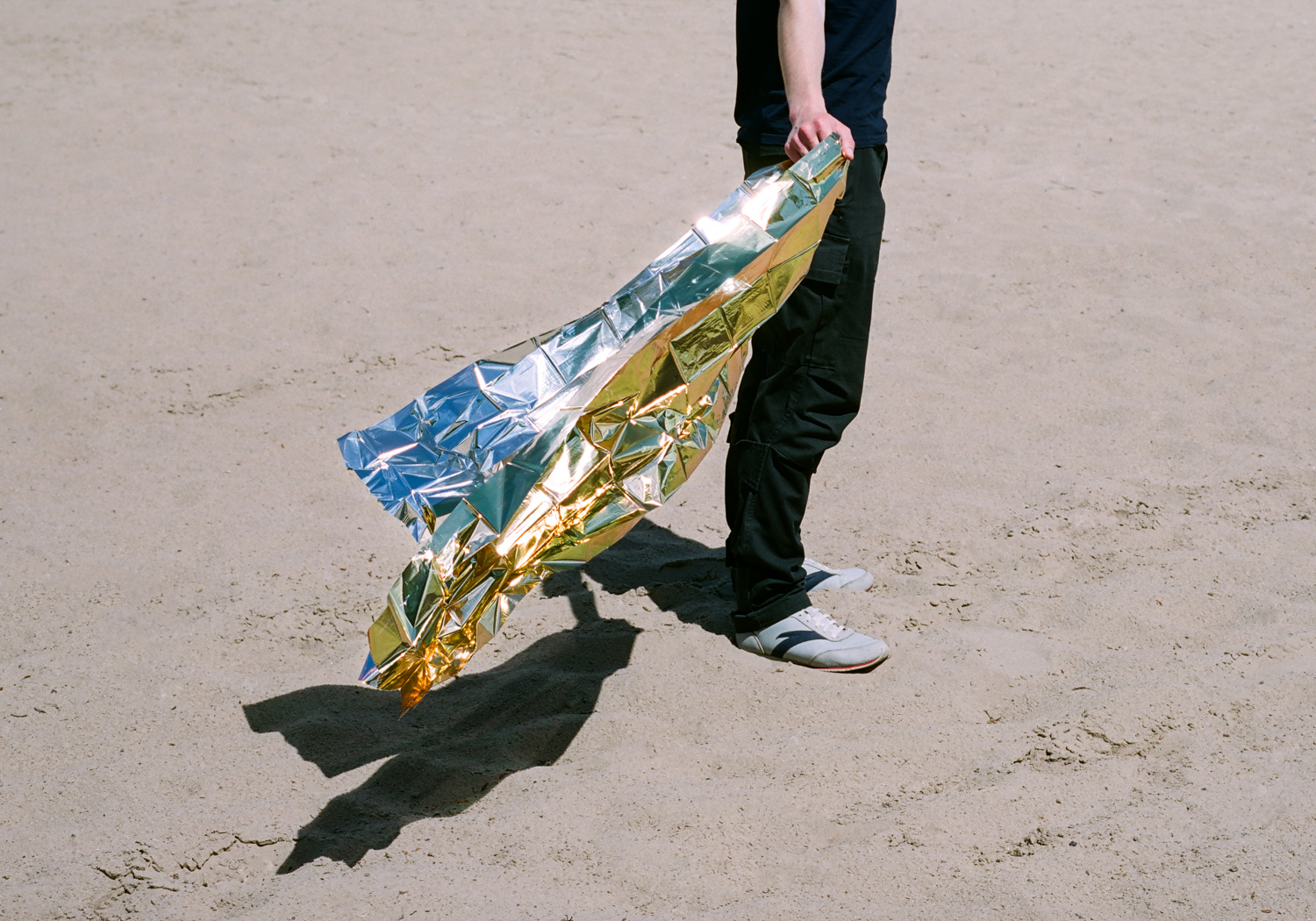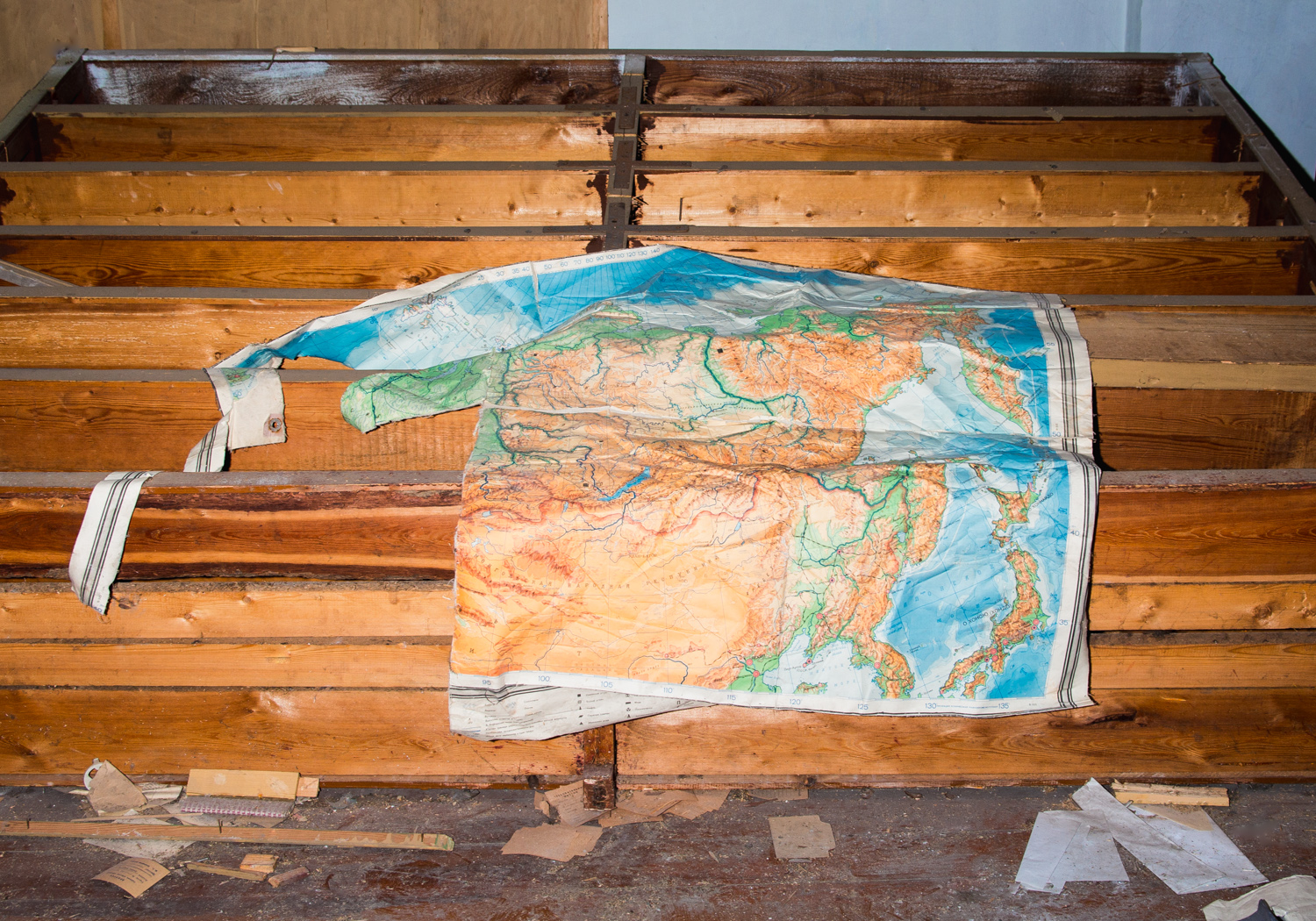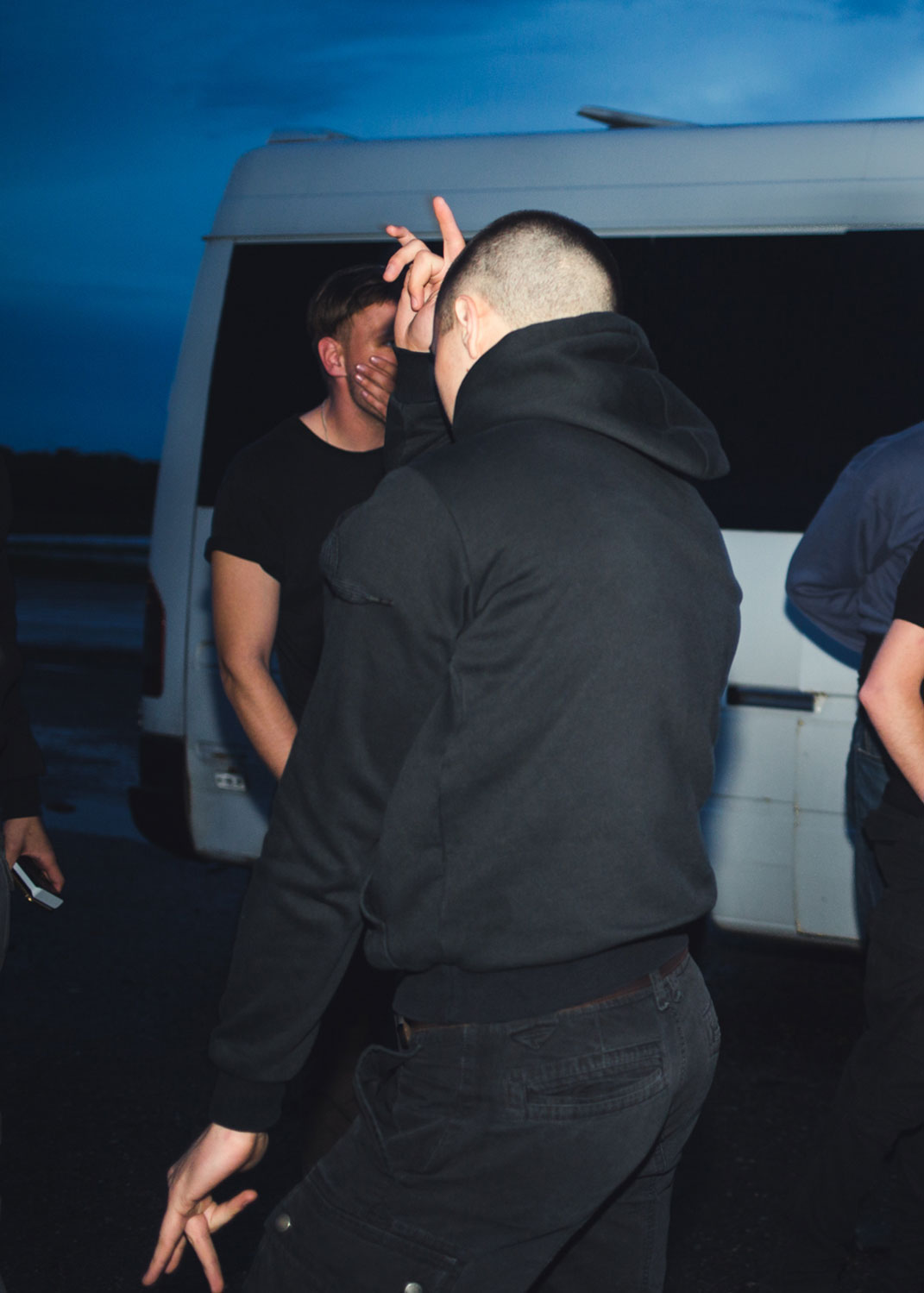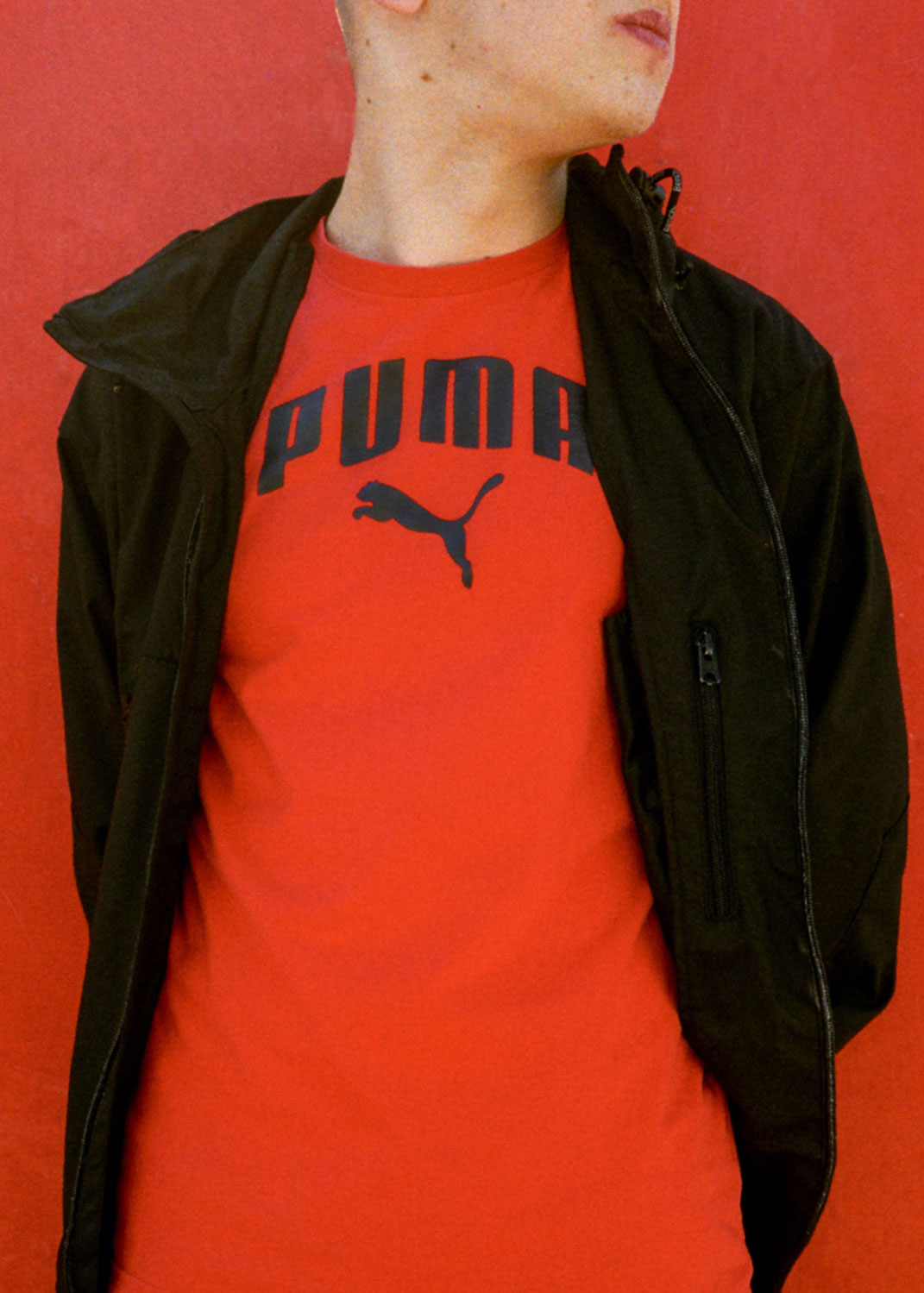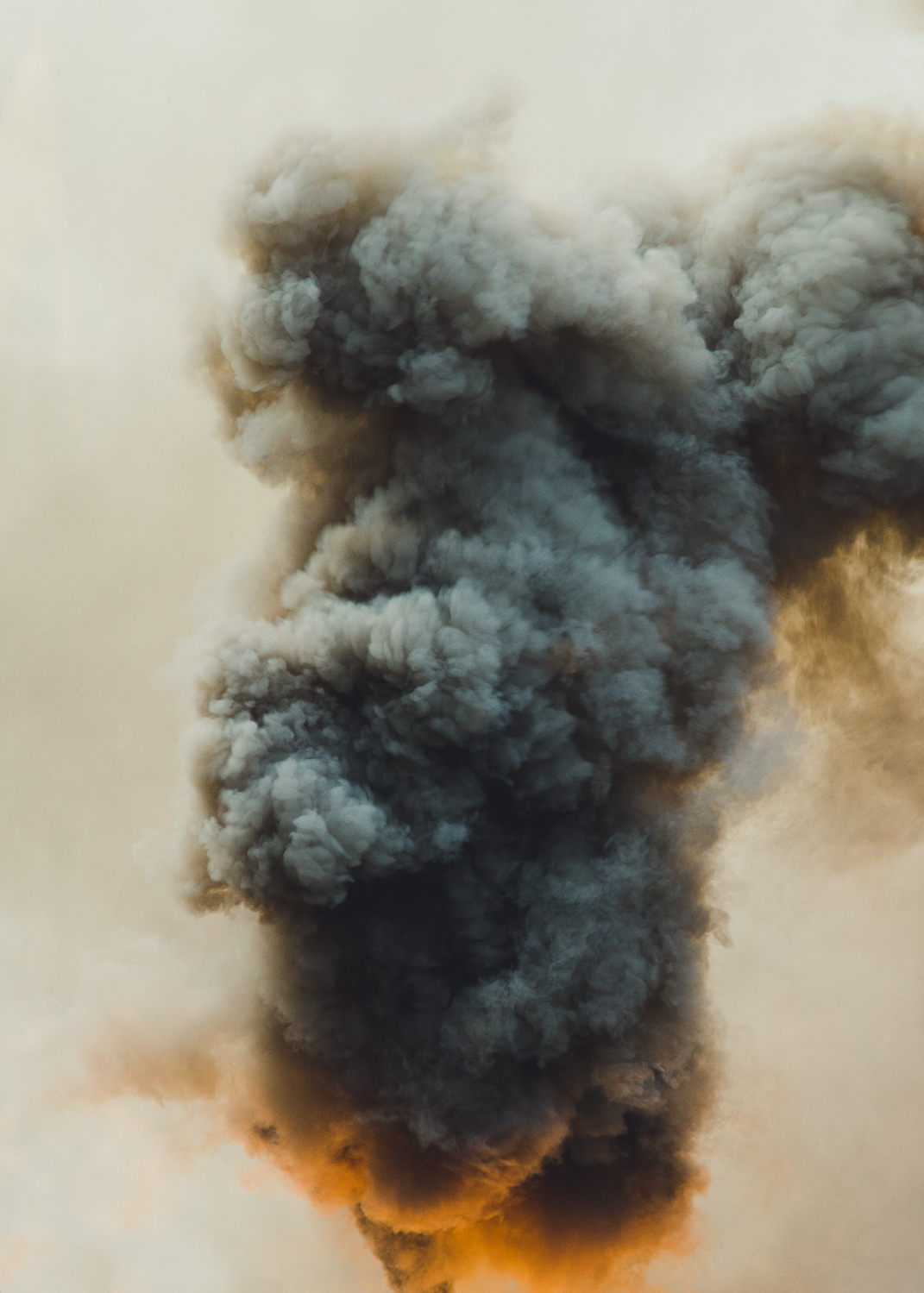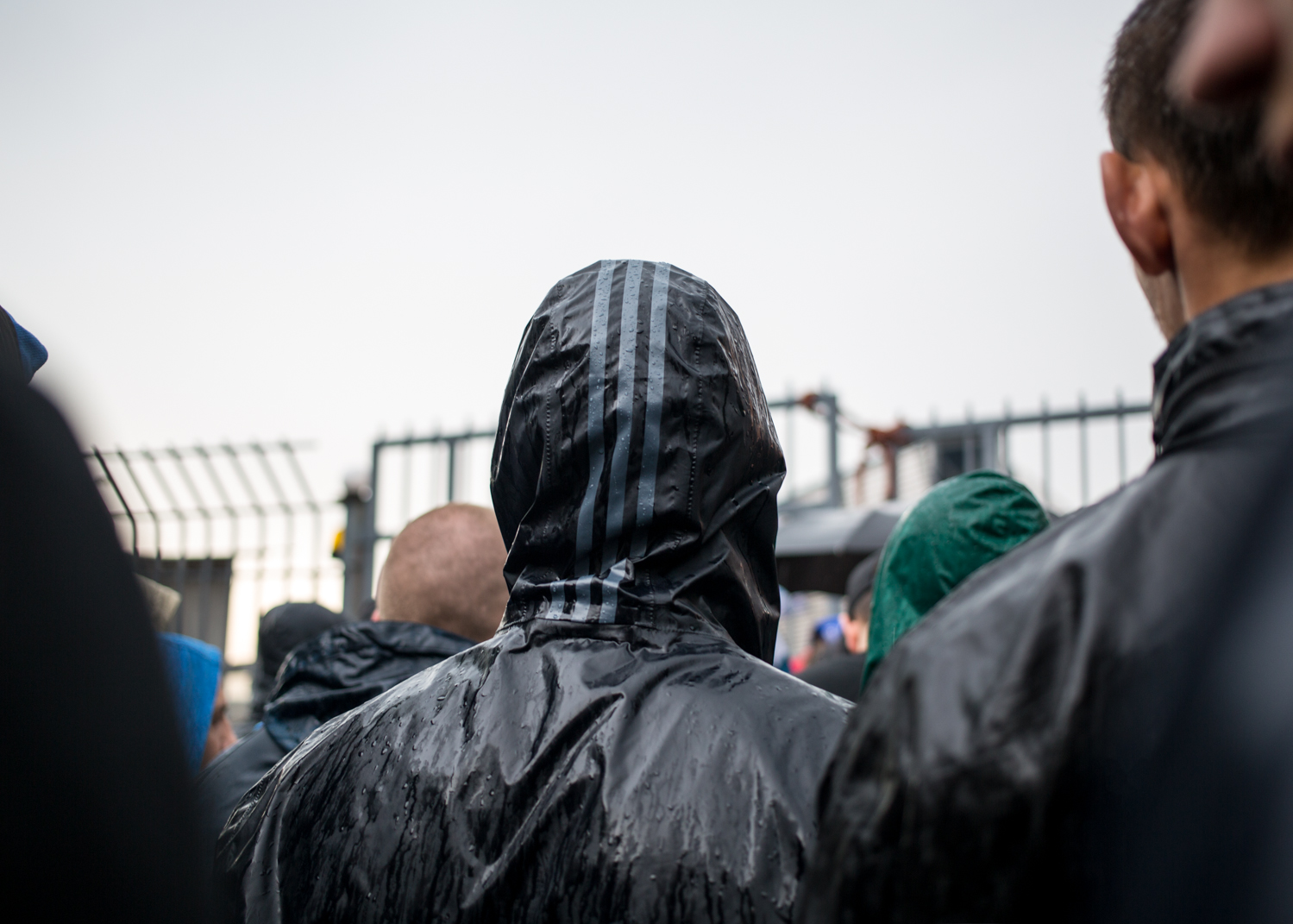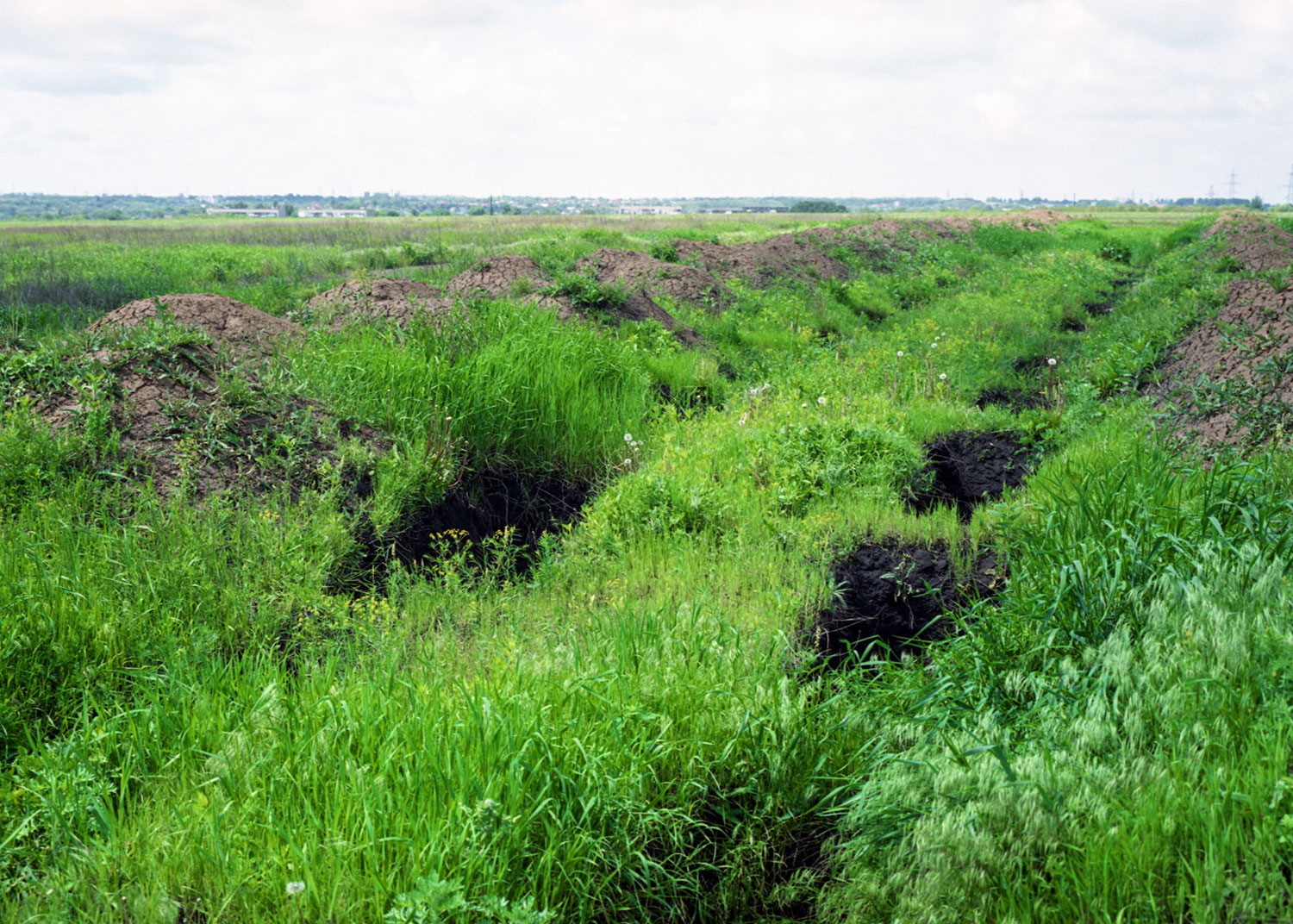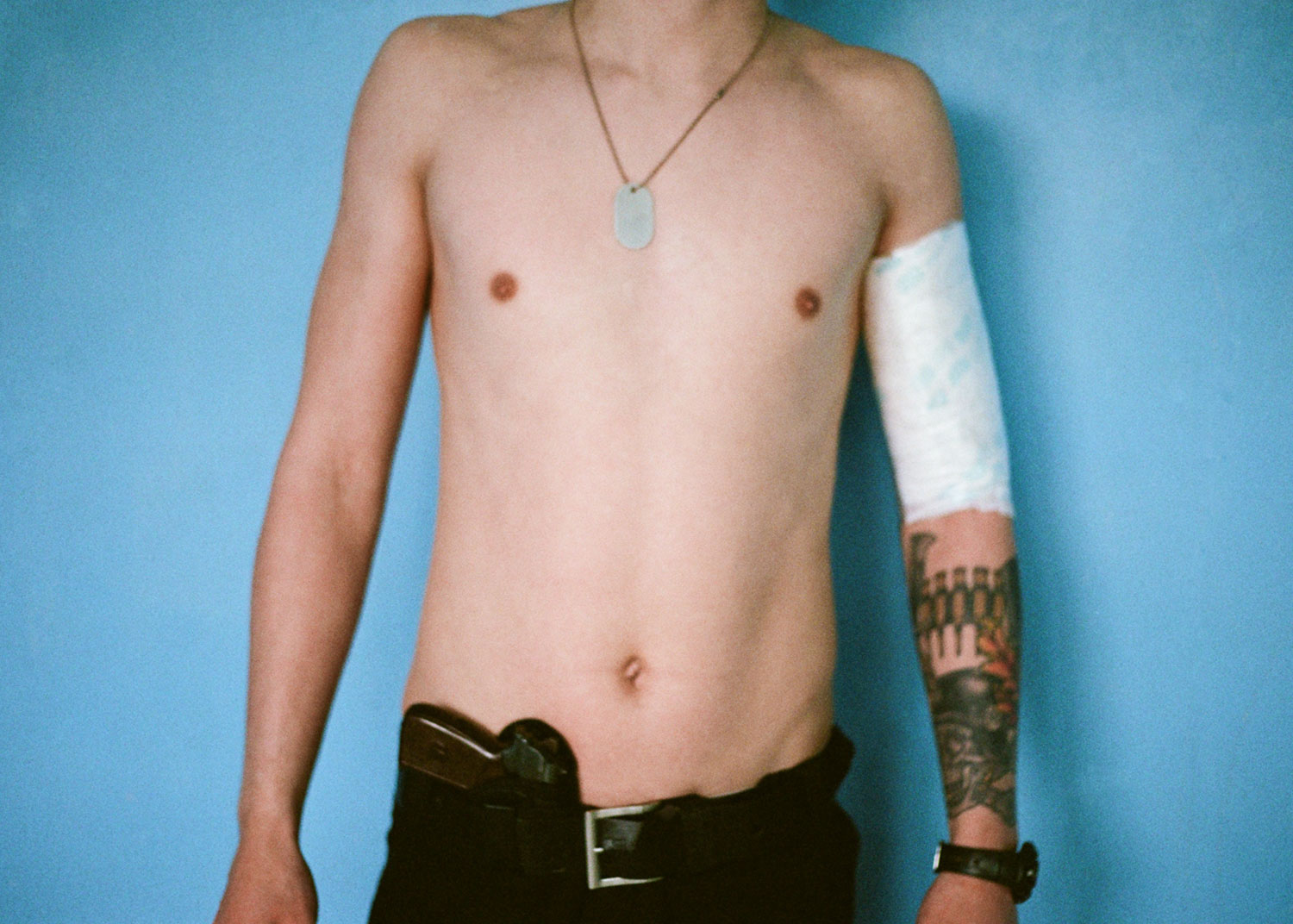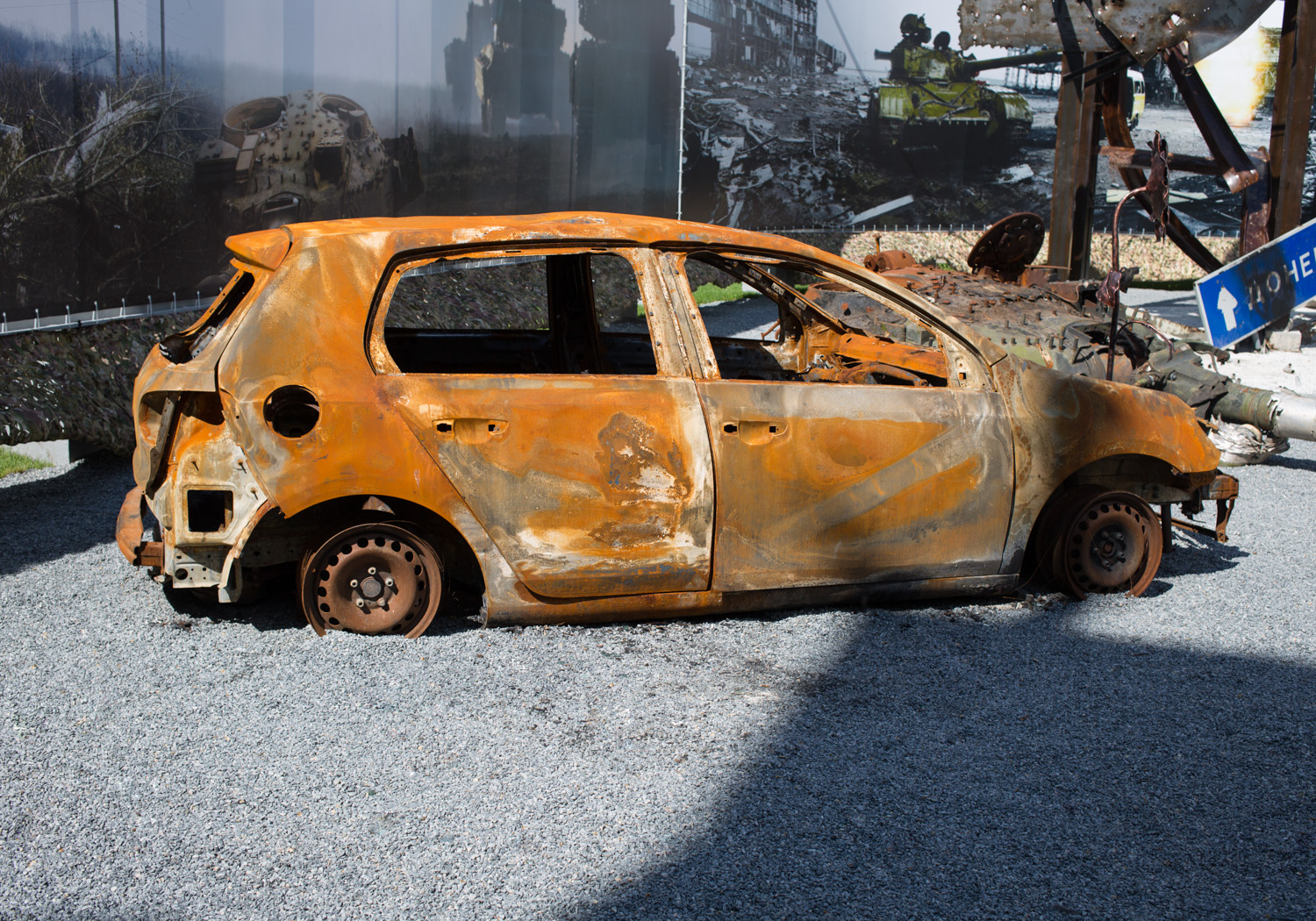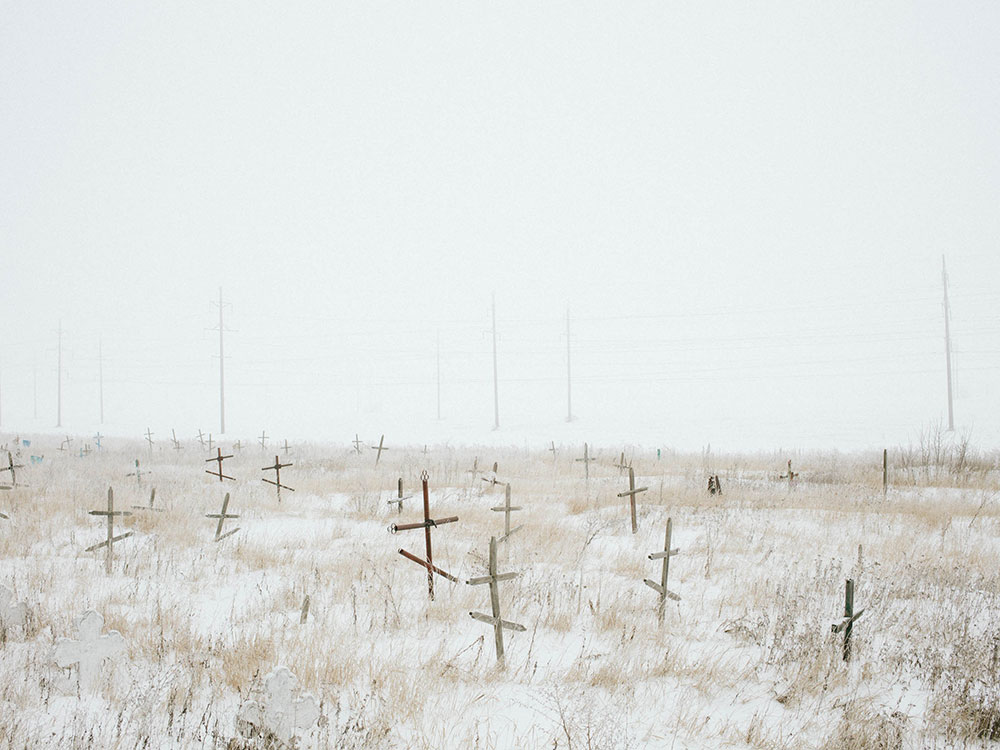Selfies, tattoos and Kalashnikovs: inside the digital life of a 20-something Ukrainian war veteran
Photographer Yulia Krivich dissects the image of a young war veteran
When war broke out in Donbass, as many as 35,000 young men signed up to the Ukrainian volunteer battalions that sprung up when Ukraine’s own army was short of manpower. Igor, the central figure of Ukrainian photographer Yulia Krivich’s latest photographic series, was among them. At 22 years old, he is a war veteran, a staunch nationalist and self-proclaimed football hooligan, yet his Instagram doesn’t look any different to that of other 20-somethings. Among the usual photos of trainers, tattoos, fishing trips and holidays to Disneyland, unicorn-related paraphernalia and animal rights sentiment, you’ll find the occasional snap of a tank in war-struck eastern Ukraine.
Krivich met Igor just after the Euromaidan in 2013, where he was photographed brandishing a heavy chain at the Berkut, Ukraine’s now disbanded, notoriously ruthless riot police. “That photo of a young guy, dressed in a balaclava and New Balance trainers, became one of the iconic image of the Maidan. From then on I started following him on Instagram, like thousands of other followers. That’s when I learned that he was part of this world of football hooliganism,” she says in reference to a growing issue not only affecting Eastern Europe but Western nations too. Igor makes an appearance standing on a frozen football field in her photo book, Presentiment, a series about Ukraine the Warsaw-based photographer shot on her visits home. From 2015, Krivich would photograph Igor whenever he’d return home from the war, with the idea to produce a longer series focused on his social circle.
“It took two years to break into this inner circle, which is usually closed off. But I understood it wasn’t enough for what I wanted to do. To truly get under the skin, I needed to immerse myself in the subject matter, so instead of the occasional meeting I needed to dedicate the time to spend with them,” Yulia says, who spent two months in Ukraine after receiving extra funding in Poland. She travelled first to the capital of Kiev, then to hers and Igor’s shared hometown of Dnipro.
For their families and neighbours and local communities, they young men have become local heroes. Away from the war, they are now occupied with fighting for national revival. Krivich followed them to marches and patriotism workshops and volunteer activities. “They have something akin to subbotniks,” Krivich says, referring to the Soviet phenomena of doing mass voluntary work on the weekend. “It’s ironic, since they are meant to be opposed to communism.” She also travelled to Zaporizhia to see a match between Dnipro and Luhansk, which ended after a disappointing result with the podium being set alight. The rest of the time is spent socialising, going to the trendiest underground raves in Kiev, dealing with the usual freedoms and tribulations of youth, with anxiety about the future ahead.
Krivich was not only interested in Igor’s day-to-day but what he chose to share of it online. Scrolling through his Instagram, the intermingling of conflict, the everyday world and the online hipster one, hit home the intimacy of war. “It’s a very bizarre process that’s happening in Ukraine. A lot of my friends are still based there. There’s a war happening not far from you, but all you can do is carry on with you life. If you were an artist you make art. If you’re in fashion, you continue with fashion. Since my hometown is not far from the border of Donetsk, this is the first big city where the soldiers, injured or deceased are taken. A year ago saw the opening of a museum, dedicated to the conflict in Donbass. Lots of artefacts were brought over from a war that is still ongoing. It’s not even officially called a war but an Anti-Terrorist Operation Zone. A friend of mine who visited the museum told me she saw children playing soldiers among a crowd of newly returned fighters.”
The question of memorialisation has a particular poignancy in a country which has not only experienced war but has undergone a process of decommunisation. A total of 1,320 Lenin statues have been pulled down since the 2015 ban, along with any other symbols, statues, flags, mosaics, imagery, anthems, street or city names associated with the Soviet Union. What will replace them is unclear. The new war heroes, on the other hand, are memorialising themselves online. This phenomena formed the focus of Krivich’s series Daring & Youth. “I was interested in how these young men create the image of a modern war hero.”
Rather than make a documentary project, the series borrows the visual language of Instagram: shot on an analogue camera, the photos are diaristic and naively romantic, typical of the kinds of photos popular online. For her exhibition, currently on display at the Wrocław Contemporary Museum, she chose to leave out the background of each photo, instead creating a fictional Instagram account where she leave hints in the form of hashtags. “I wanted to draw the audience into an illusion, only showing the superficial layer of the images. For instance there’s one picture of smoke which is visually beautiful on its own but was actually taken at a political march,” the photographer explains. Alongside moments from Igor’s life, Krivich included photographs of two buildings, both former houses of culture — the still functioning Pioneers’ Palace, now known as the Palace of Children and Youth, and the now derelict Illicha House of Culture. It was in the Illicha House of Culture where she found the ruined statue to Soviet party member Grigory Petrovsky, who Dnipropetrovsk was named after until 2016 (it has since been “renamed” in honour of the Apostle Peter). His remains form a key piece of the discordant visual puzzle that is this project.
“Nationalism, war and decommunisation are all circumstances that form the background of this project, but Daring & Youth isn’t about this. I’m interested in how we consume images and how they function in our collective consciousness. What do we see when look at this beautiful picture of smoke? What associations does it evoke?,” the photographer concludes.
Daring & Youth is on display at the Wrocław Contemporary Museum in Poland until 10 October 2017. You can find more info here.
Text: Liza Premiyak
Image: Yulia Krivich
